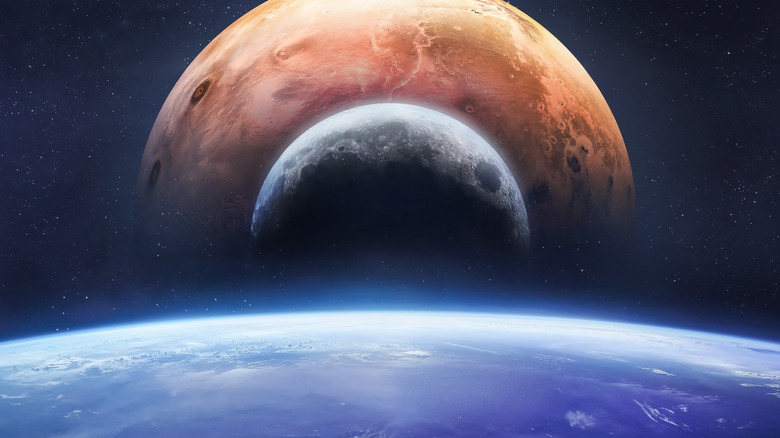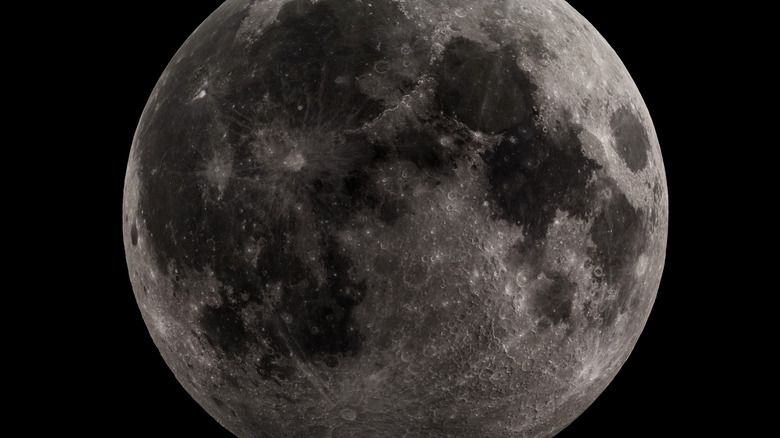How NASA's New Moon Lander Could Help Get Us To Mars And Beyond
It's no secret that NASA — along with others — has ambitions of putting boots on the Martian surface. The plan to get there first takes us back to the Moon in the form of the Artemis missions. Most of the Artemis headlines focus on the moonwalkers, and understandably so with only 12 people in history able to claim that title. But the Artemis missions are bigger and broader than they appeared, and NASA ultimately seems to have its sights set higher than just our nearest neighbor.
A recent announcement confirms this with the selection of a new moon-bound lander called the Dating an Irregular Mare Patch with a Lunar Explorer (DIMPLE). The large dark patches on the Moon are called "maria" — the Latin word for "seas" — because they were once thought of as bodies of water. In actuality, they're long-solidified lava plains. How long exactly? That's what DIMPLE intends to find out.
A small, unusual feature on the lunar surface has stumped scientists since the discovery during the Apollo program: a crater called Ina, the best known of what are called Irregular Mare Patches. These lumpy areas of the Moon look like hammered jelly in comparison to the relatively flat plains surrounding them, but they lack impact craters, indicating a younger age. Are they the result of collapsed caldera? Inverted lava flows? Gas explosions? Ground collapse? It's still uncertain, and scientists are sending DIMPLE to Ina to search for answers.
The future of exploration and the history of the Moon
DIMPLE is expected in 2027, with $50 million price tag. Once it reaches its destination, it will take samples and analyze them on-site. The goal is to determine how recently this area was volcanically active. This information could enhance or even drastically alter our understanding of the Moon's geologic past. Perhaps the prevailing theories about the evolution of the Moon's internal temperature or radioactivity are in need of revision.
Understanding the Moon's history and geology means a better understanding of it holistically. The implications could range from better insights into mineral formation to an ability to predict where water might be found elsewhere in the universe. This knowledge can in particular be applied to other planetary bodies, like Mars. NASA's associate administrator for science Nicola Fox said as much in an announcement, stating, "...the more we understand about our closest neighbor, the more we can support long-term human exploration at the Moon, and someday, Mars."
While Mars is clearly the next target for human exploration after the Moon, it's not hard to imagine sending landers similar to DIMPLE out to other bodies. This could be a stepping stone to the wider solar system. Planetary bodies believed to have water like Enceladus, Europa, and Ceres are just a few potential targets for future similar missions.

